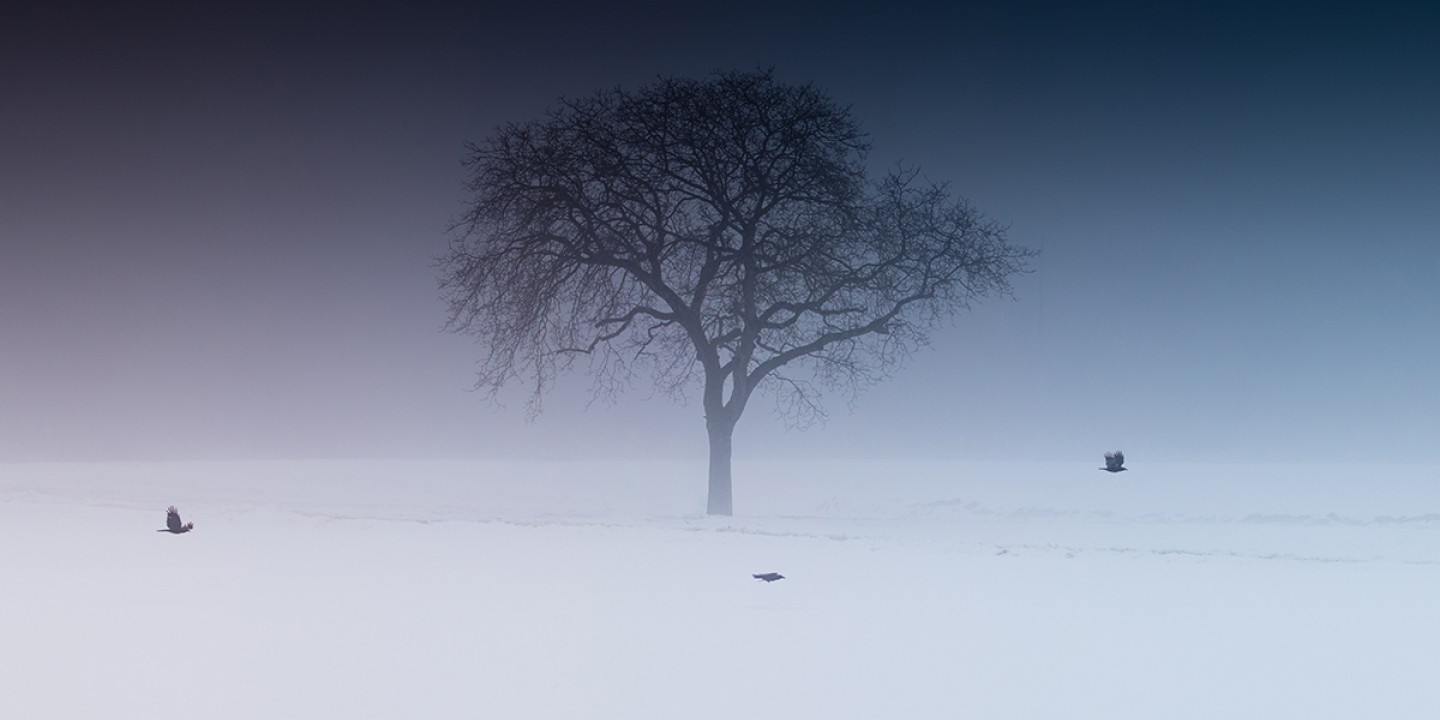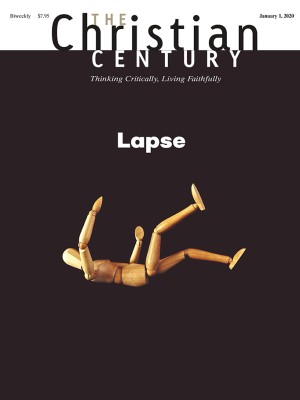In Advent and Christmas, desolation and consolation reside together
This time of year, our inner landscapes can seem as bleak as the outer ones.

The days between November’s fading light and late December’s inky darkness have a severity about them, and not just because the trees are stripped bare and winter winds can come early (at least for those of us in the cooler climes of the northern hemisphere). It’s because our inner landscapes can sometimes seem as desolate as the outer ones. Achy uncertainty can blanket our spirits like a late-autumn snowstorm that covers everything in slate-gray stillness.
Advent isn’t just a season; it’s a sensibility, an aesthetic, a way of seeing and naming things truthfully. It fixes our gaze, unflinchingly if we’re willing, on the trouble in our midst and the trouble to come. Its appointed lectionary readings are sobering and often startling—at once familiar and inscrutable.
Read our latest issue or browse back issues.
This year I’ve been thinking about the connections between Advent’s eschatology and the ecological trouble to come (along with the ecological trouble that is already here). So much of Isaiah’s vision of a redeemed future, for instance, is about transformed landscapes: blooming deserts, water in parched places, the glory and majesty of forests and mountains (35:1–7). Eschatology in the Bible isn’t abstract, it’s local (Lebanon, Carmel, Sharon), topographical, and arboreal.
Plant ecologist Robin Wall Kimmerer has coined the evocative phrase “the grammar of animacy” to signal the moral inclusion of all created beings into everyday patterns of human speech. This grammar assumes, for example, the subjectivity of “pines and nuthatches and mushrooms.” It is not unlike the agency the prophet grants to other-than-human subjects in his own neighborhood: “The wilderness and the dry land shall be glad, the desert shall rejoice and blossom; like the crocus it shall blossom abundantly, and rejoice with joy and singing” (Isa. 35:1–2).
Advent’s eschaton is not a generic idyll but the reclaiming of creation’s goodness in a particular landscape after the ruin of subjugation and exile. Imagining a place (and its people) whole, as the biblical writers do, is not wishful thinking or the deferral of dreams; it is political resistance and the telling and living of a counternarrative to the imperial script of “how things have to be.”
Advent’s eco-eschatology envisions restorative justice for human communities, too. Justice for the oppressed, food for the hungry, freedom for the prisoner, and sight for the blind—we say or sing these lines from Psalm 146:7–8 or Mary’s Magnificat, even as we hear them taken up in the Gospel reading on the same Sunday (Matt. 11:4–5). The cycle of lections across the three-year calendar brims with these themes. In hearing them, we are summoned to truthful seeing—to the recognition, as Dorothee Sölle once observed, that “the boot of the empire crushes everything in its way in the narrative from Bethlehem to Golgotha.” It does this in our time, too.
When Christmas comes, I find myself drawn to the poetry of R. S. Thomas. A man of rugged features, Thomas lived all his life in the rugged, forbidding terrain of his native rural Wales. An Anglican priest, he possessed an austerity that reveals itself in poems as spare as they are beautiful. Here are the opening lines of “Hill Christmas”:
They came over the snow to the bread’s
purer snow, fumbled it in their huge
hands, put their lips to it
like beasts, stared into the dark chalice
where the wine shone, felt it sharp
on their tongue . . .
To imagine the story of the shepherds eucharistically is to acknowledge that vulnerability and hunger of all kinds are at the heart of both the human condition and the way of Jesus. It is to allow that, as Gustavo Gutiérrez says, “the Word became history, contingency, solidarity, and weakness,” and that, because of this, we may find ourselves occupying the edges of empire, bearing eschatological witness to a counter-story of people and places returned to themselves, restored to health.
In reflecting on Christina Rossetti’s famous poem “In the Bleak Midwinter,” Thomas offers an insight that maybe only a true lover of language could: “the very word ‘Christ’ has that thin, crisp sound so suggestive of frost and snow and the small sheets of ice that crack and splinter under our feet, even as the Host is broken in the priest’s fingers.” Thomas may have been recalling severe Welsh winters; I imagine shattering ice shelves and calving icebergs in the melting of Antarctica. What do I do with that image when, palms extended, someone places the thin, crisp Christ into my hand and says, “the body of Christ broken for you”?
St. John Paul II said that the Eucharist is always celebrated on the altar of the world: the eco-eschaton in a wafer, earth’s glories and travesties contained in a common cup. In Advent and even at Christmas we are mindful that desolation and consolation aren’t sequential but coterminous. And in these long, dark days when the catastrophic can overtake us, these are strange and sweet satisfactions.
A version of this article appears in the print edition under the title “Desolation and consolation.”






